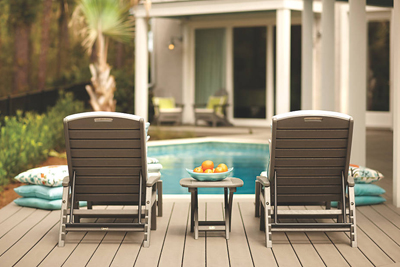Things to Consider while Choosing Paint for Your Wood

To All Our Valued Customers, Over the past few years, the Covid 19 Pandemic has forced us to adapt and change the way we do things on a day-to-day basis. Florida Lumber is no exception. To make sure that we remain strong and competitive in the market for the years to come, Florida Lumber has had to adjust and change our vision for the future. In the last 2 years, we have stopped selling Sheetrock and drywall products, roofing felt and roofing materials, and have even closed on Saturdays.
Over the last few months, we have been transitioning our way out of the door supply business so on August 31, 2022, our door shop will stop assembling doors. We will continue liquidating our doors from inventory until we are out of material.
Some customers have asked if we are closing or even moving locations. To set the story straight, we are not closing or selling the business and we are not moving. These changes are all part of our new vision and path to continue serving South Florida and increasing our footprint in the construction supply industry.
Our focus is going to be on Lumber, Construction Materials, Rebar Fabrication and Rebar Accessories. As we have liquidated some of the items that we don’t sell anymore we have created more space to buy a larger volume of our core items and pass on the savings to our customers.
In the next year you will start seeing changes that will help improve our ability to serve you, our customers. We appreciate your business and your patience as Florida Lumber’s new vision becomes reality.
A Todos Nuestros Valiosos Clientes En los ultimos anos, la pandemia de el Virus (Covid 19) nos ha forzado a adaptarnos y cambiar la forma de hacer cosas en el dia a dia. Florida Lumber no ha sido una excepcion.
Para asegurarnos de mantenernos fuertes y competitivos en el mercado en los anos venideros, Florida Lumber ha tenido que ajustar y cambiar nuestra vision para el futuro. En los dos ultimos anos hemos dejado de vender los productos de yeso (sheetrock), paneles de yeso (drywall), tela asfaltica (roofing felt), materiales de techo y cerramos los Sabados. En los ultimos meses, hemos estado en transicion para salir del negocio de suministro de puertas, en Agosto 31, del 2022 nuestra tienda de puertas dejara de construir y/o cortar puertas. Vamos a continuar liquidando nuestro inventario de puertas haste que terminemos todo el material. Algunos de nuestros clientes han preguntado si estamos cerrando o si nos estamos moviendo a otra localidad. La verdad es que no estamos cerrando, no estamos vendiendo y no estamos cambiando de localidad. Estos cambios son todos parte de nuestra nueva vision y camino a continuar sirviendo al estado sur de la Florida y incrementar nuestras huellas en la industria de suministros de construccion.
paneles de yeso (drywall), tela asfaltica (roofing felt), materiales de techo y cerramos los Sabados.
En los ultimos meses, hemos estado en transicion para salir del negocio de suministro de puertas, en Agosto 31, del 2022 nuestra tienda de puertas dejara de construir y/o cortar puertas.
Vamos a continuar liquidando nuestro inventario de puertas haste que terminemos todo el material. Algunos de nuestros clientes han preguntado si estamos cerrando o si nos estamos moviendo a otra localidad.
La verdad es que no estamos cerrando, no estamos vendiendo y no estamos cambiando de localidad. Estos cambios son todos parte de nuestra nueva vision y camino a continuar sirviendo al estado sur de la Florida y incrementar nuestras huellas en la industria de suministros de construcción.
2431 N.W. 20TH ST.
MIAMI, FL 33142
PHONE: (305) 635-6412
Sales Fax: (305) 633-4054
Accounting Fax: (305) 635-3723
Email: sales@tloridalumber.com

Choosing the right paint color is an important aspect of any home renovation process. It’s also the most difficult exercise to undertake. With the many options to choose from, where do you even start?
The type of wood paint you buy has an effect on the perceived value of your home. It'll improve the aesthetics and make it appealing to the public, a necessity when you want to sell it.
In this article, we'll look at the factors involved in choosing the right paint color for your home.
1. Usage of the Room
How do you intend to use the room you're just about to paint? And, who will be using the room after it’s painted?
Let's make this simple. If you're painting an office, the interior colors you use should make visitors feel comfortable. It should also re-energize your employees.
Depending on your tastes and preferences, you can go for a warm color with a stimulating effect.
If the painting is for your bedroom, the focus should be on achieving a calming vibe. The colors should make you relaxed; this depends on your tastes and preferences.
2. Lighting Needs
It’s important to know what degree of natural light your room allows. This is because different shades of paint will look different in various light intensities.
If a room allows excess natural light, then darker paints would be the most ideal.
Before you choose the right paint for wood, it's imperative that you test it out. Paint a sample on your wall and pay careful attention to its changes throughout the day.
In this way, the paint you buy is able to match your lighting needs at home.
3. The Adjacent Rooms
Most corporate buildings will have rooms that flow directly into each other. In most cases, they'll use an arch or half-wall to separate them.
When applying the paint, it's imperative you decide what color you’ll apply in the adjacent room. Will you use the same color, or will you go for a contemporary color in the adjacent room?
If you're painting different colors, you want to consider the overall tone of your home. Otherwise, the room seems disjointed from your home. You don't want this to happen.
4. The Room Size
The common misconception when painting a smaller room is that you should use a white color. Most people believe that it helps give an illusion of a bigger space. While that’s true, it may create a feeling of airiness in the room.
Dark colors will also work well for your small room. In fact, they'll blend to its edges and camouflage its limited size.
Using dark colors in a bigger room will draw it in, creating an impression that it is small.
It's important that you choose a shade of color that goes well with the size of your room. A lighter color will enhance the feeling of openness in your room.
5. The Fittings
Unless you intend to buy new furniture, you'll need to consider the fittings you have in your home.
When painting your interiors, you don't want anything to feel out of place. At times, a contrast between the two is advisable.
Choose a paint color that is darker or lighter than the furnishing on your property.

